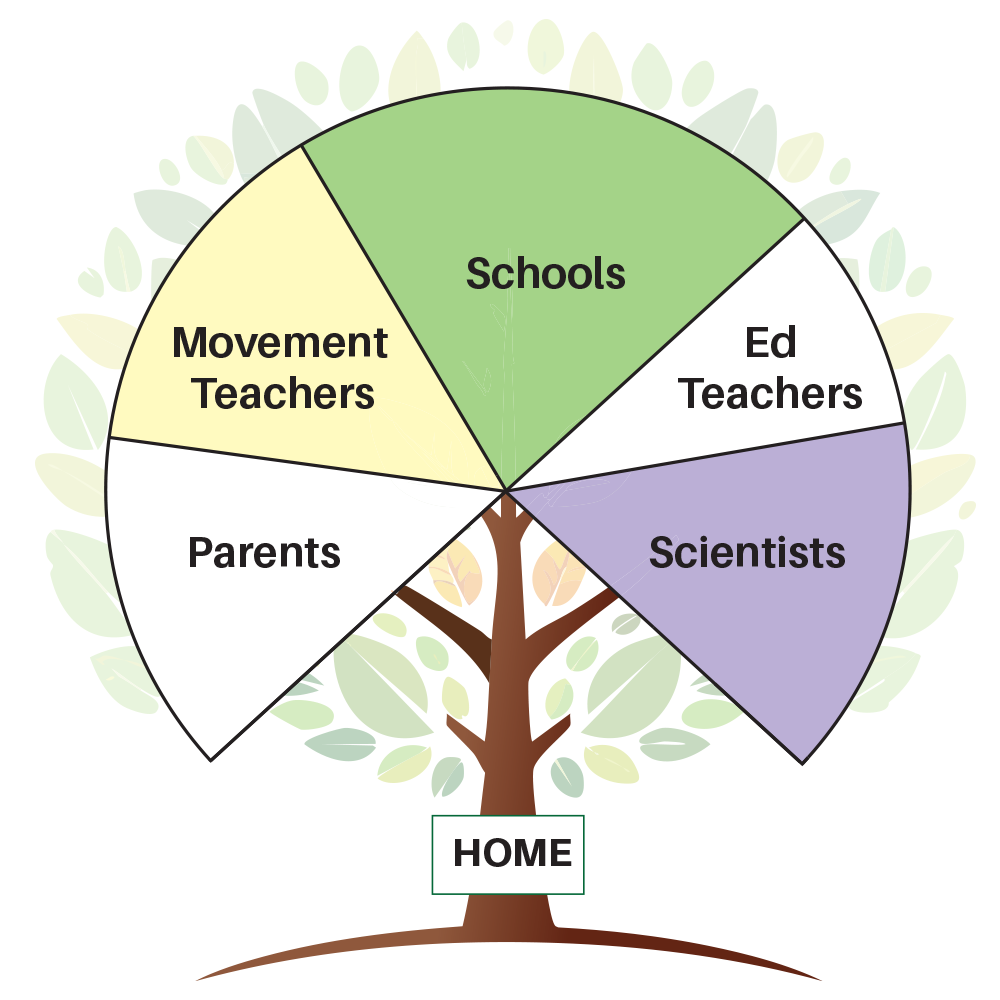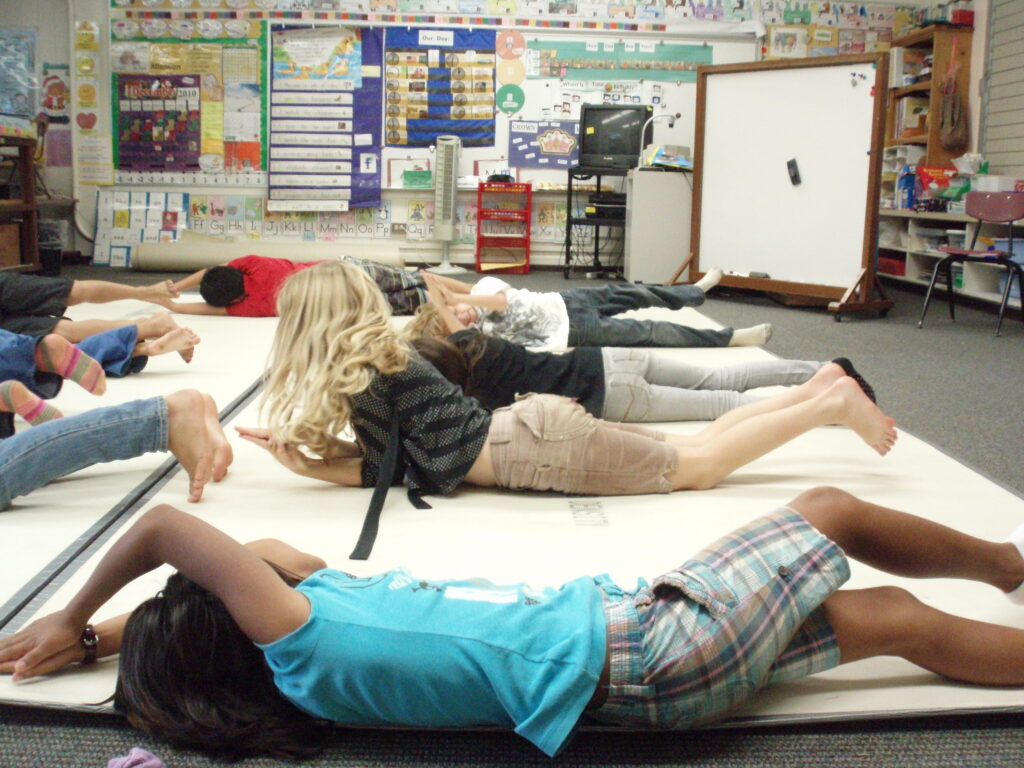
Movement Lessons that Changes Behavior

Attention Scientists and Schools: hire a movement teacher for Part II. This “teacher” can be a Feldenkrais® practitioner certified to teach the method, Awareness Through Movement® (ATM), and is highly recommended.
Part II
A synthesis of…
…the Feldenkrais® Method, developmental movements, &
behavioral psychology into games.
Part II lessons were tested for eight years in five elementary schools. It is with the Part II lessons improvements specifically with ADHD (attention deficit hyperactivity), and social-emotional behavior. occurred.
Strategies
Also see the Part II lessons six strategies using movement from the body to the brain. Six Body to Brain Strategies.
For Severe Disorders
In the case of severe cognitive behavioral disorders, it is highly recommended to reach out to a certified Feldenkrais® Practitioner® in your area. Please contact us if you need assistance. We emphasize this not for the sake of business, but because using movement as a therapeutic approach in more complex situations requires specialized expertise. Often, children with severe cognitive disorders benefit from one-on-one, hands-on Feldenkrais® support.
Sneak Preview
For lessons to transform behavior and improve cognitive functioning, the movement has to serve as a teacher, not an exercise. The actions must transcend motion as merely an exercise to achieve a particular end to a synthesis of attention, action, and perception that builds awareness.
Body Wisdom
The body’s innate wisdom is rooted in motion. Motion is the parent of all learning. Motion means life itself. The sequenced actions in Part II’s movement games provide physical sensations. These sensations reveal the symphony of perception, physical action, and cognitive functioning. Notice how the movement begins and ends like a melody of a song. Watch how the melody of motion interacts with various body parts. Notice how strong actions of the notes can curtail what is perceived and not perceived.
Less in More
There are no right or wrong movements in WTM movement; rather, they offer valuable experiences. By focusing on both the body, perception, and the environment, a space is created where opposing forces can be reconciled. Through movement, children learn about harmony or disharmony between their actions and intentions.
Strategies in a Nutshell
For a deeper understanding of the underlying science behind Part II lessons, refer to the “Scientist” page. For in-depth talk on how it affects cognition see “Six Body to Brain Strategies”held at 2018, Movement and Cognition conference (venue Harvard Medical School). Researchers recognize the importance of motion for cognitive development. However, effective methods to enhance this innate wisdom are still being investigated. There is a tremendous gap to what scientists understand about movement that is not in communities. WTM works to bridge this gap.
Movement that Grows
Part II’s lessons utilize movement—based on physics and neurological development—as building blocks. The “blocks” include physical structure, sensory input, and the interplay of attitude and behavior. Movement is used to reveal actions individuals might not be aware of. The complexity of motion in physics is foundational to how the human skeleton senses. It also shows how our senses interact. This natural design is what influences development of both behavior and cognition.
Gain Insights from Motion
By observing movement and its complexities, teachers and parents gain insight into unseen processes in their children. The sequencing of movement games is key. Movements are building blocks that accesses an innate wisdom, highlighting gaps in physical actions and the development. These gaps are significant to how other parts of the body and character of perception are effected.
For more details on how to use movement in your own lessons, refer to the Movement Teachers page. For research-related queries, check the Scientist page or contact us.
The sequences of movements of the lesson will help in the integration into cognitive functioning.
Sneak Preview of Lessons to Part II WTM







To Get the Part II lessons Contact Us
The more people who reach out to us about Part II, the stronger our chance of securing funding to release the lessons. Your voice matters—thank you for your support!
